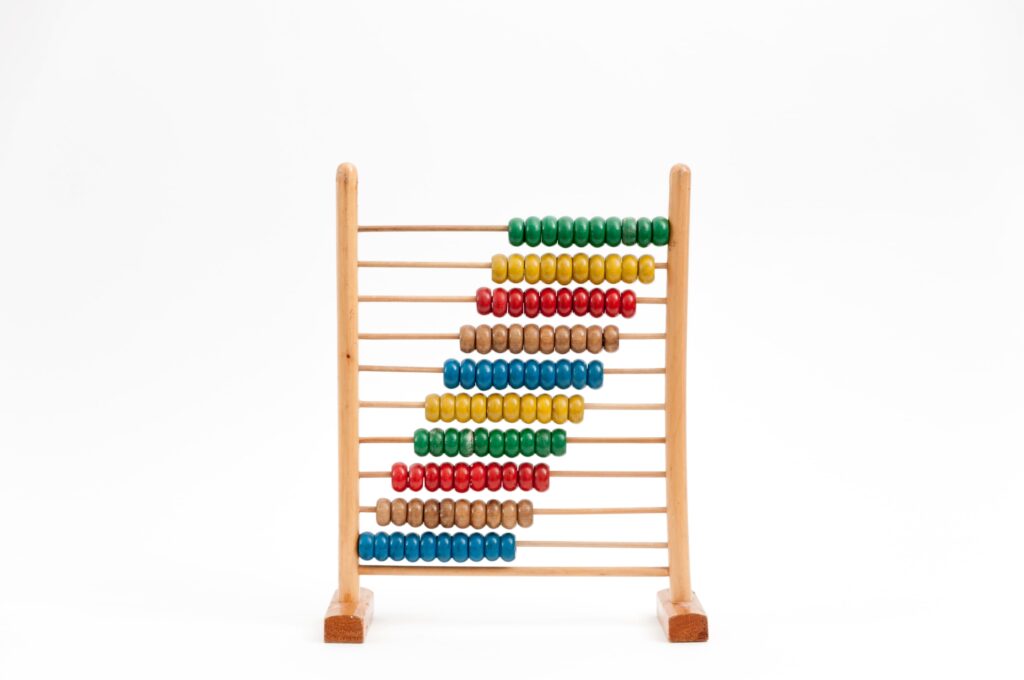Deciding to retire is a big decision only made more difficult by the fact there are no clear answers as to how much you will need to accumulate to do so. I have seen over a dozen different ways to estimate how much you will need or quick little formulas to calculate your desired spending level. But that’s just the thing; there was over a dozen! If the experts cannot decide how much is appropriate, then how is anyone else supposed to?
Life expectancy has been steadily increasing since people began recording it, so making the correct decisions that will affect you late in life is incredibly important. No pressure.
Because of the lack of consistency and a universal “correct number,” I have scoured the web, read the books, and done the math to determine this number. Below I will outline every variable you need to consider when planning exactly how much you need to retire.

How Much Will I Spend?
Your spending in retirement will undoubtedly change. Mortgages will be paid, kids will move out, college will be a thing of the past, saving for retirement is irrelevant. On the other side, healthcare costs, the desire to travel, and new hobbies will all increase and find ways to take more of your money.
Locking in this number before you retire is obviously ideal, as waiting until you get there can lead to a poor retirement. Only you will be able to figure this number out for yourself, and having a budget already in place will make it much easier. Go through each section below and try to determine at least a ballpark figure for each of these categories.
Medical
Healthcare expenses are incredibly complicated to predict or calculate. One study by the National Bureau of Economic Research has shown that spending increases the older you are, with costs doubling between the ages of 70 and 90. Also oddly enough, the poor consume more medical services than the rich. Whether you have high or low healthcare spending you are likely to continue needing either high or low spending, so it just makes sense to do everything you can to head towards needing low spending.
While Medicare and Medicaid are valuable services, they are not a complete health insurance replacement despite their purpose. Assuming you will be entirely protected from inflating healthcare costs is foolish, so it is best to plan ahead. Experts estimate you will be out of pocket between $5,000 and $20,000 a year; super helpful in planning I know. My personal recommendation here is to stay as healthy as you can and assume the worst.
Travel
One of the more popular hobbies for retirees is travel. A rough estimate from a variety of different individuals who have done it estimates that you can travel constantly for between $20,000 and $30,000 per year. This of course assumes you will avoid consistently visiting tourist traps where a night will cost you hundreds or thousands of dollars. Depending on your household expenses, you could actually save money by travelling instead of staying at home bored; funny how that works!
Now, the above figure does assume you will be constantly travelling and also assumes you will not look for more luxurious activities. You can easily spend north of $150,000 a year on pre-packaged trips tailored to guide you around the world if that is what you are interested in. At the same time, if you would rather be home more, you are only looking at a sporadic cost of maybe several thousand a year.
Hobbies
Hobbies in retirement can be both a boon and a curse. On one hand, this is the source of the most joy from retirement outside of maybe travelling. On the other hand, you can easily wreck your budget by overspending.
Take the time now to price just how much you need to spend on your potential hobbies, or give yourself a generous amount of leeway for new passions you pick up along the way. It is good to stay flexible, especially when it comes to discretionary spending such as hobbies and entertainment.
Household
Not all expenses go up in retirement, thankfully. Hopefully you will have paid off your mortgage by now, and if you are not certain you will then I would make a change of plans to do so. With mortgages averaging 28% of income, this will result in some major cashflow freeing up.
If you have children, then hopefully they have moved out and are no longer relying on you, so that cuts down on just about every expense you can think of: insurance, food, utilities, education, and more. With the average cost of raising a child to the age of 18 being about $285,000, you can expect an additional $15,833 reduction in expenses if we assume this is paid equally throughout the years, though it certainly is not.
It goes without saying you will no longer be saving for retirement in retirement! Depending on just how aggressive you were saving, you are looking at significant savings here. Most experts put this number at 15% of pretax income, though I would argue for a much higher percent.

How Much do I Save?
Did you come up with a monthly or yearly spending number above? If so, then this is the easy part.
A widely used rule of thumb for how much money you need to put away is to multiply your yearly spending by 25. This gives you an initial withdrawal rate of 4% which is then tied to inflation. This rule is used so widely because it gives a high probability of lasting a minimum of 30 years.
Do you see my problem with that rule? I want my money to outlive me, not the other way around! A high probability of lasting 30 years does not quite cut it for me. What if your retirement lasts even longer? What if you have a major hiccup in retirement requiring major spending? What if you want to leave an inheritance?
Another problem with rule of thumbs is that they are prone to change. The 4% rule is no longer safe; the probability of failure for a 4% withdrawal rate is actually 40%, and even a 3% withdrawal has a 21% probability of failure!
For me personally, I aim for a maximum of a 2% withdrawal rate. The amount I will need to have saved is calculated by multiplying my annual spending by 50. The probability of failure is basically zero and I can rest easy knowing I will be able to pass it on to take care of my family long after I am gone. I don’t like the idea of gambling with my future, so taking a 40% chance that I will run out of money in retirement is just too much for me.
While I understand a 2% withdrawal rate is a particularly aggressive goal to reach, there are ways to reduce how much you actually need to withdraw. Social Security does provide a fair amount of money, though it is nothing to rely on completely like 21% of retired couples! If you have a pension, you get to reduce your required withdrawal rate by this amount as well. Certainly the easiest way to reduce this amount is to go back to work; however be warned that a significant percent of people who think they will go back to work actually don’t follow through. Turns out getting a taste of retirement is too much.

How do I Save That Much?
Hitting your retirement savings goal is certainly a daunting task, especially if you are young or late in your career with low savings. Through a systematic approach you can amp up how much you are saving for retirement, especially if you have not taken a close look at where your money is going.
There are really only two ways to save more money; make more and spend less. Making more money should always be your first and foremost goal as you can easily spend less later, whereas making more money can be stunted for years to come if you do not make good career choices. That is not to say you should not try to spend less now since it is uncomfortable fighting against lifestyle inflation, but if you are trying to nickel and dime yourself into a strict budget when you barely make above the poverty line you are only hurting yourself.
For making money, you need to take moderate risks in your career. Studies, and first hand experience, have shown that the quickest way to increase your income is to move companies every 2-3 years. It is unfortunate the marketplace today does not reward loyalty, so you must learn to play the game to get what you want.
As for spending less, I would recommend establishing a budget in order to see where your money is going and divert any excessive spending to retirement savings. This is mostly an exercise in what you want today versus what you want tomorrow; if you can live without it today without major life changes, then why not do your future self a favor and pay to take care of them?

What Do I Invest In?
So you have an amount you want to budget for, an amount you need to save, and a plan to get there. What now?
You cannot just stuff all this money underneath your mattress or cram it into a savings account and call it a day. Fortunately it does not have to be much more complicated than that. If you want a very hands off approach to investing, a target date fund for the year you wish to retire is just about as simple as it gets; the closer you are to retirement, the more conservative the fund becomes so you don’t have to worry about it. Of course, the fees are slightly higher than if you adjusted the allocations yourself, but that is the price you pay for simplicity.
If you prefer to get your hands a little dirty, you can certainly balance your portfolio yourself. A general rule of thumb (not another one of these!) is to allocate a certain percent of your portfolio to bonds depending on your age. For instance, the bond percent could be 130-age, so if you are 50 years old then you will have 20% bonds, 80% stocks. You will save a little in fees, plus financial planning in itself makes for a decent hobby if you enjoy it.
As for the brokerage to open an account with, I typically prefer places that will not charge you fees for the silliest things. Fidelity and Vanguard are the two big players I like to point people towards. I personally use M1 Finance as I am a sucker for pie charts. None of those links offer a referral bonus, as I did not want to have financial motive influencing my suggestions. Whatever you choose, make sure you do your research so you understand how they operate and what potential fees they might charge you.

Shockingly Simple
Long story short, the formula for retirement is not too incredibly complicated.
Annual Spending / Percent Withdrawal Rate = Savings Goal
The key to success is to make a conscious effort to set things up right, periodically checking up on your plan to make sure things are as they should be, and then relax knowing you are on track to the retirement you want.




